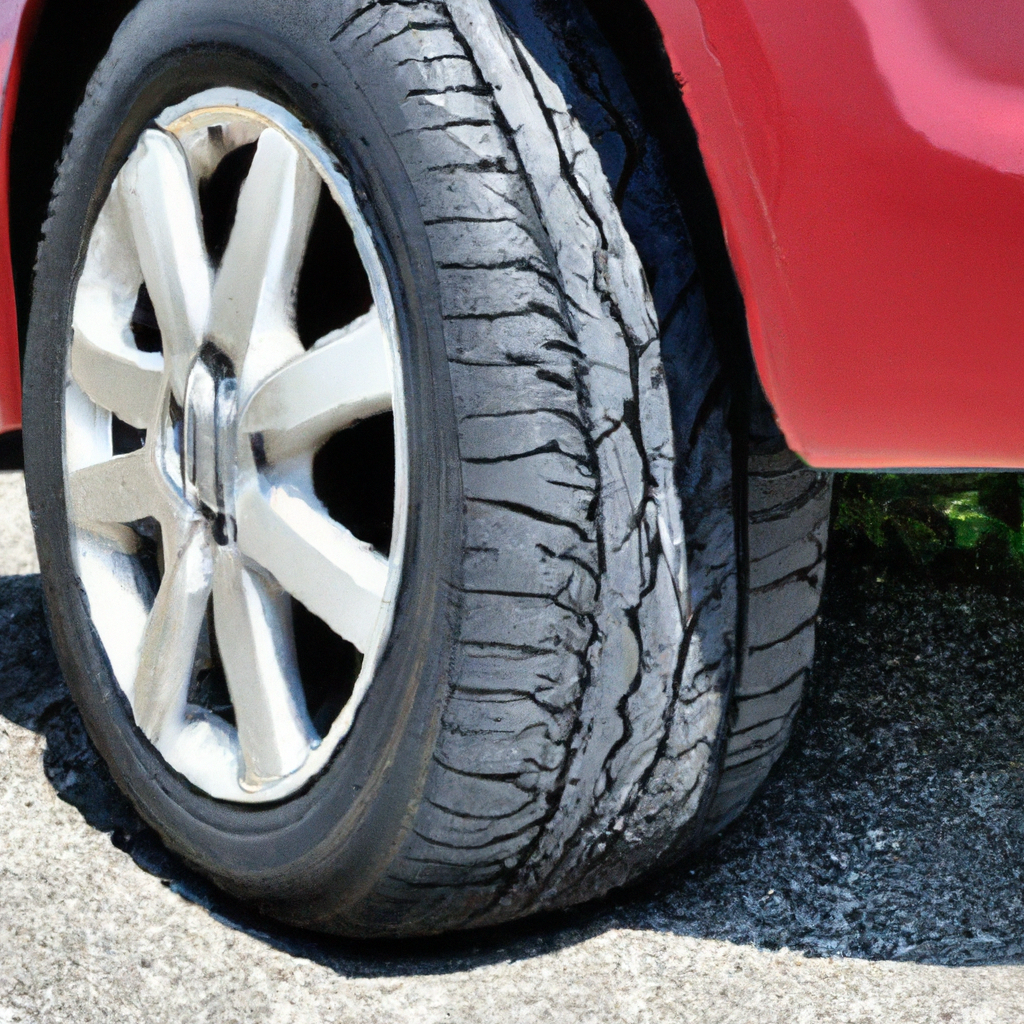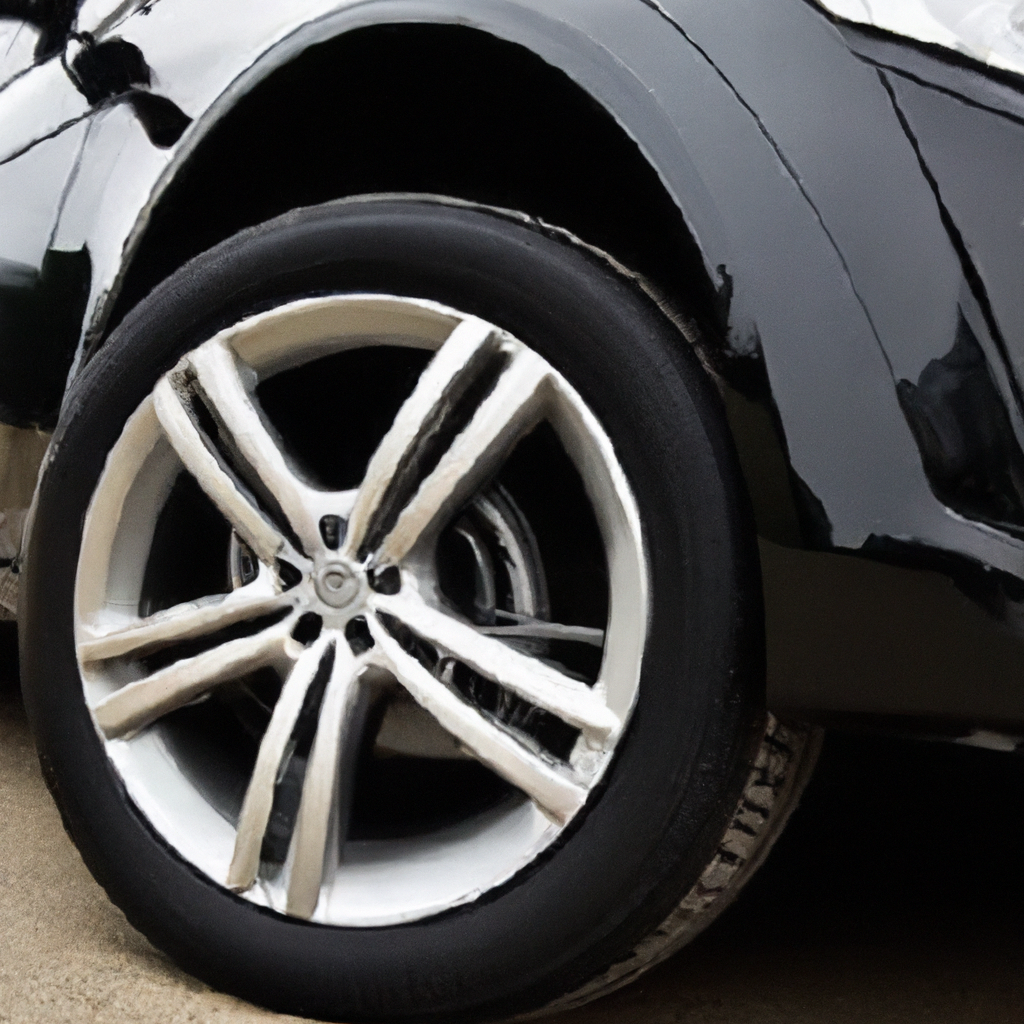Imagine cruising down the road in a sleek and stylish vehicle, turning heads with its impeccable design. Now, picture the same vehicle with a flat tire. Not quite as attractive, right? Run-flat tires have become a popular option for car owners, offering convenience and peace of mind in case of a puncture. But have you ever wondered how these tires actually impact the overall aesthetics of a vehicle? In this article, we will explore the visual effects of run-flat tires and discover if they can truly maintain the allure of your beloved ride.

1. Introduction
When it comes to vehicles, aesthetics play a significant role in capturing our attention and influencing our perception of the vehicle. From the sleek lines of the body to the stylish design of the interior, every aspect of a vehicle’s appearance contributes to its overall appeal. One component that often goes unnoticed but can have a substantial impact on the aesthetics is the tires. In particular, run-flat tires, with their unique characteristics, can influence the visual appeal of a vehicle in various ways. In this article, we will explore the effect of run-flat tires on the overall aesthetics of a vehicle, considering factors such as design considerations, wheel selection, vehicle proportions, overall performance, and customer perception.
2. Run-Flat Tires: An Overview
2.1 What are Run-Flat Tires?
Run-flat tires are a type of tire designed to allow a vehicle to continue driving even after experiencing a loss of tire pressure. Unlike conventional tires, run-flat tires are built with reinforced sidewalls and an inner support ring, which enables them to support the weight of the vehicle, even when deflated. This design prevents the tire from collapsing and losing control, allowing the driver to safely navigate their vehicle to a repair facility or a safe location in the event of a puncture or blowout.
2.2 Advantages of Run-Flat Tires
Run-flat tires offer several advantages over conventional tires. First and foremost, they provide added safety by allowing the driver to continue driving, even with a flat tire. This eliminates the need for immediate roadside assistance and reduces the risk of being stranded in potentially unsafe situations. Additionally, run-flat tires provide improved handling and stability, thanks to their reinforced construction. They also offer increased convenience, as they eliminate the need for carrying a spare tire or using a tire repair kit.
3. The Importance of Aesthetics in Vehicles
3.1 Role of Aesthetics in Vehicle Design
In the world of automobiles, aesthetics play a vital role in attracting potential buyers and creating a strong brand identity. Vehicle manufacturers invest significant resources in designing vehicles that not only perform well but also look visually appealing. The exterior design of a vehicle, including its shape, lines, and overall appearance, is crucial in creating a lasting impression and attracting customers. Aesthetics also extend to the interior design, where materials, colors, and layout contribute to the overall appeal of the vehicle.
3.2 Impact of Aesthetics on Customer Perception
The aesthetics of a vehicle can greatly influence customer perception and buying decisions. A visually appealing vehicle is more likely to be associated with quality, reliability, and status. Consumers often gravitate towards vehicles with stylish designs, as they are perceived as more desirable and attractive. Aesthetics can also convey a sense of innovation and modernity, helping a vehicle stand out in a crowded market. Hence, it is crucial for vehicle manufacturers to consider the impact of various components, including tires, on the overall aesthetics of their products.
4. Design Considerations for Run-Flat Tires
4.1 Size and Profile
When it comes to designing run-flat tires, manufacturers must carefully consider the size and profile of the tire. The overall dimensions of the tire can affect the vehicle’s stance and proportions. Run-flat tires typically have slimmer sidewalls compared to traditional tires, allowing them to bear the weight of the vehicle even when deflated. This slim profile can give the vehicle a sleeker appearance, contributing to a more modern and sporty design.
4.2 Tread Pattern
The tread pattern of a tire plays a significant role in the vehicle’s overall aesthetics. Manufacturers must ensure that the tread pattern of run-flat tires aligns with the vehicle’s design language. A well-designed tread pattern can enhance the visual appeal and give the vehicle a more aggressive and athletic look. On the other hand, a poorly designed or mismatched tread pattern can detract from the overall aesthetics and make the tire appear out of place.
4.3 Sidewall Design
The sidewall design of run-flat tires also influences the vehicle’s aesthetics. The reinforced sidewalls, which are necessary for the tire to function properly when deflated, can have a visual impact on the vehicle. Manufacturers must carefully consider the design of the sidewalls, ensuring that they blend seamlessly with the overall design of the vehicle. By incorporating attractive elements, such as unique patterns or branding, into the sidewall design, manufacturers can enhance the overall aesthetics and create a cohesive look.

5. Impact of Run-Flat Tires on Vehicle Appearance
5.1 Slimmer Tire Sidewalls
One of the notable effects of run-flat tires on vehicle aesthetics is the presence of slimmer sidewalls. As mentioned earlier, run-flat tires have reinforced sidewalls to support the weight of the vehicle in case of a flat tire. These slimmer sidewalls can contribute to a more streamlined and contemporary look. The reduced visual volume of the tires gives the vehicle a sportier appearance, emphasizing its performance-oriented nature. Additionally, the slimmer sidewalls can create a more pronounced wheel well, showcasing the design of the wheels and adding a visually striking element to the vehicle’s overall appearance.
5.2 Altered Wheel Design
With the use of run-flat tires, vehicle manufacturers have the opportunity to alter the design of the wheels. Since run-flat tires eliminate the need for a spare tire, manufacturers can adjust the wheel design to match the desired aesthetics of the vehicle. This freedom allows for more creative and unique wheel designs that can further enhance the overall appeal of the vehicle. The altered wheel design can contribute to a more upscale and sophisticated look, making the vehicle stand out from its competitors.
5.3 Limited Tire Size Options
One of the design considerations with run-flat tires is the availability of limited tire size options. Run-flat tires require specific dimensions to accommodate the reinforced sidewalls and inner support ring. As a result, vehicle manufacturers may have limitations when it comes to choosing tire sizes that align with their desired aesthetics. This constraint can impact the vehicle’s proportions, as certain tire sizes may not complement the overall design. However, manufacturers work closely with tire suppliers to ensure that the available tire sizes meet their design requirements while offering the necessary run-flat capabilities.
6. Run-Flat Tires and Wheel Selection
6.1 Compatibility with Standard Wheels
One of the concerns regarding run-flat tires is their compatibility with standard wheels. As run-flat tires have different construction and design compared to conventional tires, they require specific wheel compatibility to ensure optimal performance and safety. In some cases, vehicles come equipped with specialized wheels designed specifically for use with run-flat tires. However, for vehicles that are not equipped with such wheels, compatibility may be a consideration when selecting run-flat tires.
6.2 Availability of Run-Flat-Compatible Wheels
To address the wheel compatibility issue, manufacturers have recognized the need to offer run-flat-compatible wheels. These wheels are specifically designed to accommodate the unique requirements of run-flat tires while maintaining the desired aesthetics of the vehicle. Run-flat-compatible wheels ensure proper fitment and provide the necessary structural support for the tires, ensuring optimal performance and safety. The availability of these wheels allows customers the flexibility to choose run-flat tires without compromising the overall aesthetics of their vehicle.

7. The Influence of Run-Flat Tires on Vehicle Proportions
7.1 Changes in Ride Height
The use of run-flat tires can lead to changes in the vehicle’s ride height. Run-flat tires typically have a slightly stiffer sidewall compared to conventional tires, which can result in a slight increase in the overall ride height of the vehicle. This change in ride height can impact the vehicle’s proportions and alter its visual appeal. Vehicle designers must take this into consideration when designing the suspension and body of the vehicle to maintain the desired aesthetic proportions.
7.2 Impact on Wheelbase
Another aspect influenced by the use of run-flat tires is the vehicle’s wheelbase. Run-flat tires, with their unique construction and design, may affect the effective wheelbase of the vehicle. The effective wheelbase is the distance between the front and rear wheel contact points on the road. Changes in the effective wheelbase can have an impact on the vehicle’s proportions, altering its visual appeal and potentially affecting its handling characteristics. Manufacturers carefully tune the suspension to compensate for any changes in wheelbase to maintain the desired ride and handling characteristics while preserving the overall aesthetics.
7.3 Effect on Overall Vehicle Dimensions
In addition to changes in ride height and wheelbase, the use of run-flat tires can have an effect on the overall dimensions of the vehicle. The slimmer sidewalls and altered wheel design associated with run-flat tires can impact the visual perception of the vehicle’s width, height, and length. These changes in dimensions can contribute to a more dynamic and purposeful appearance, giving the vehicle a distinct presence on the road. Manufacturers leverage these design opportunities to create vehicles with enhanced proportions that align with their brand identity and customer preferences.
8. Run-Flat Tires and Overall Vehicle Performance
8.1 Suspension Tuning and Handling
Run-flat tires can have an impact on the overall vehicle performance, particularly in terms of suspension tuning and handling characteristics. The stiffer sidewalls of run-flat tires can lead to a firmer ride, transmitting more road imperfections to the occupants of the vehicle. However, vehicle manufacturers take this into account during the design and development process. They fine-tune the suspension system to ensure that the ride remains comfortable while maintaining the desired handling characteristics. The goal is to strike a balance between comfort and sportiness, providing a dynamic driving experience without compromising the overall aesthetics of the vehicle.
8.2 Noise, Vibration, and Harshness (NVH)
Another factor influenced by the use of run-flat tires is noise, vibration, and harshness (NVH). The reinforced construction of run-flat tires can result in increased noise and vibration levels compared to conventional tires. However, manufacturers employ various techniques to minimize NVH levels, such as optimizing the tire tread pattern and using advanced tire compounds. By reducing noise and vibration, manufacturers ensure that the overall driving experience is refined and comfortable, enhancing the perceived quality of the vehicle.
8.3 Weight and Fuel Efficiency
The use of run-flat tires can also affect the weight and fuel efficiency of a vehicle. Run-flat tires tend to be slightly heavier than conventional tires due to their reinforced construction. The additional weight can impact the overall weight distribution of the vehicle and potentially influence its fuel efficiency. However, vehicle manufacturers work diligently to optimize the vehicle’s weight distribution and aerodynamics to mitigate any negative effects on fuel efficiency. By employing lightweight materials and advanced engineering techniques, manufacturers strive to maintain or improve the vehicle’s fuel efficiency while offering the benefits of run-flat tires.

9. Customer Perception of Vehicles with Run-Flat Tires
9.1 Perception of Safety
One of the primary reasons for choosing run-flat tires is the enhanced safety they provide. Customers perceive vehicles equipped with run-flat tires as safer and more reliable, knowing they have the ability to continue driving in the event of a flat tire. The peace of mind that comes with run-flat tires can positively impact customer perception of the vehicle, making it a desirable option for those prioritizing safety and security.
9.2 Perceived Ride Quality
Customer perception of ride quality may vary when it comes to vehicles equipped with run-flat tires. As discussed earlier, run-flat tires can lead to a slightly stiffer ride due to their reinforced sidewalls. While some customers appreciate the firmer ride, others may prefer a more compliant and comfortable experience. However, it is important to note that vehicle manufacturers put significant effort into suspension tuning to maintain a balance between comfort and sportiness. By ensuring a smooth and controlled ride, manufacturers aim to meet the expectations and preferences of their target customer base.
9.3 Aesthetic Preferences
Aesthetic preferences can greatly influence a customer’s perception of a vehicle. While some customers may appreciate the sleek and sporty appearance of vehicles equipped with run-flat tires, others may have different aesthetic preferences. The design elements associated with run-flat tires, such as slimmer sidewalls and altered wheel designs, may not align with everyone’s taste. However, vehicle manufacturers strive to offer a range of design options to cater to different aesthetic preferences. By providing a variety of tire and wheel combinations, manufacturers allow customers to personalize their vehicles and find the aesthetic that suits their individual style.
11. Conclusion
The aesthetics of a vehicle are a crucial factor in capturing the attention of potential buyers and influencing their perception of the vehicle. Run-flat tires, with their unique characteristics, have a significant impact on the overall aesthetics of a vehicle. From the size and profile of the tires to the altered wheel design, run-flat tires can enhance the visual appeal and create a more sporty and contemporary look. However, there are design considerations, such as limited tire size options and compatibility with standard wheels, that vehicle manufacturers must navigate to ensure optimal aesthetics. Despite these challenges, run-flat tires offer added safety, improved handling, and convenience, which can positively influence customer perception. Ultimately, the aesthetics of a vehicle must strike a balance between form and function, providing an appealing design while meeting the demands of safety and performance. Vehicle manufacturers continue to innovate and refine their designs, ensuring that run-flat tires not only enhance the aesthetic appeal of a vehicle but also deliver on their promises of safety and reliability.


